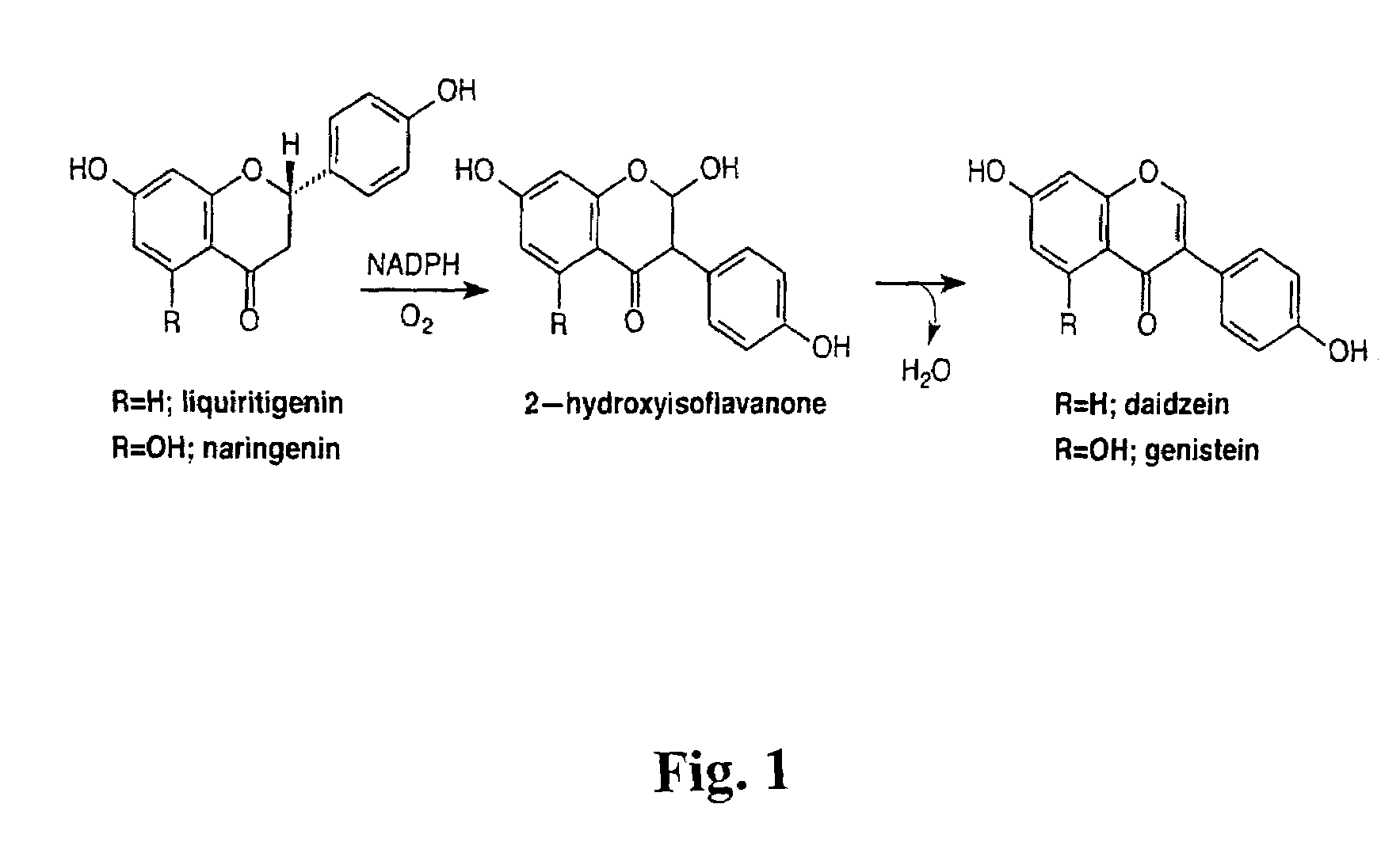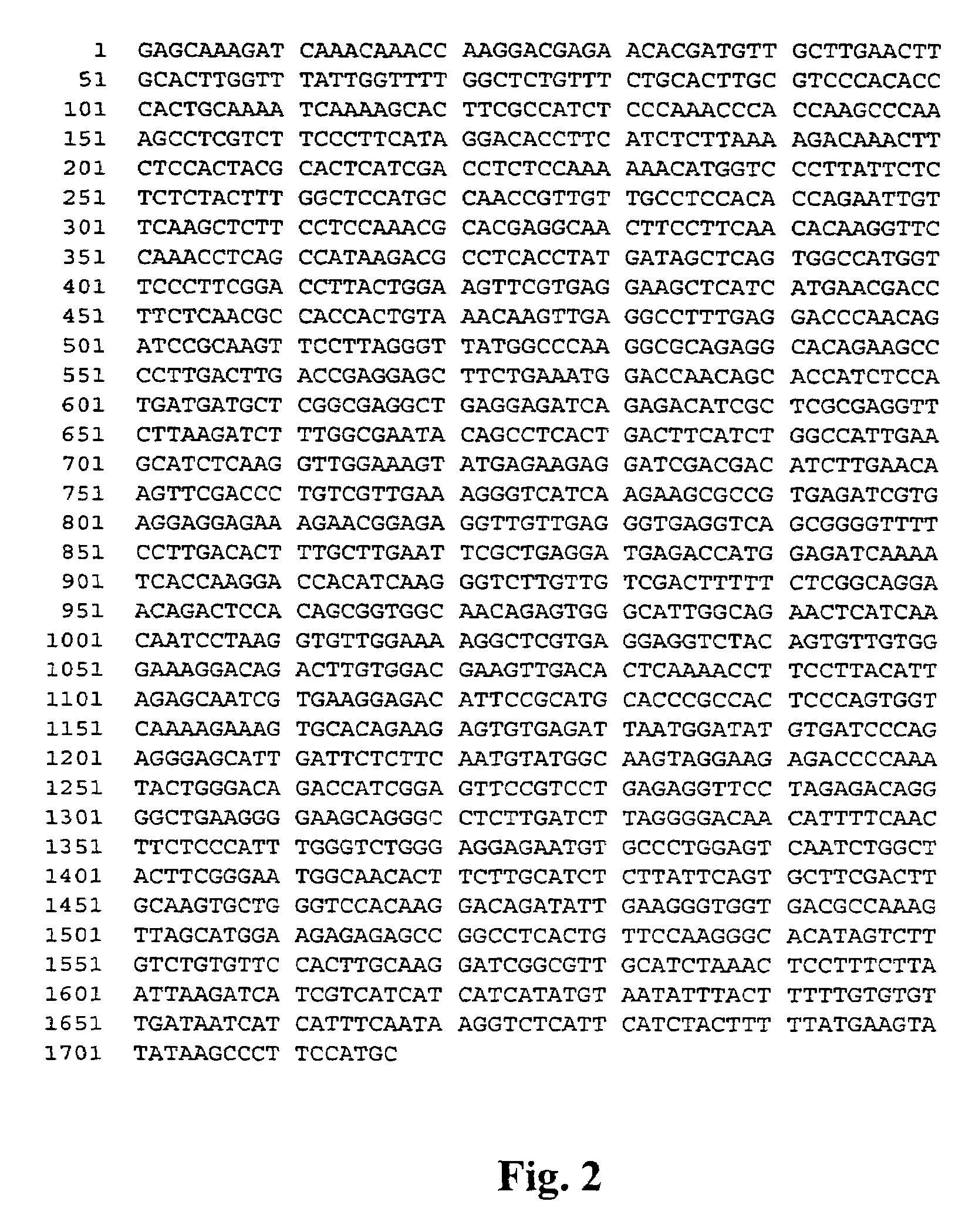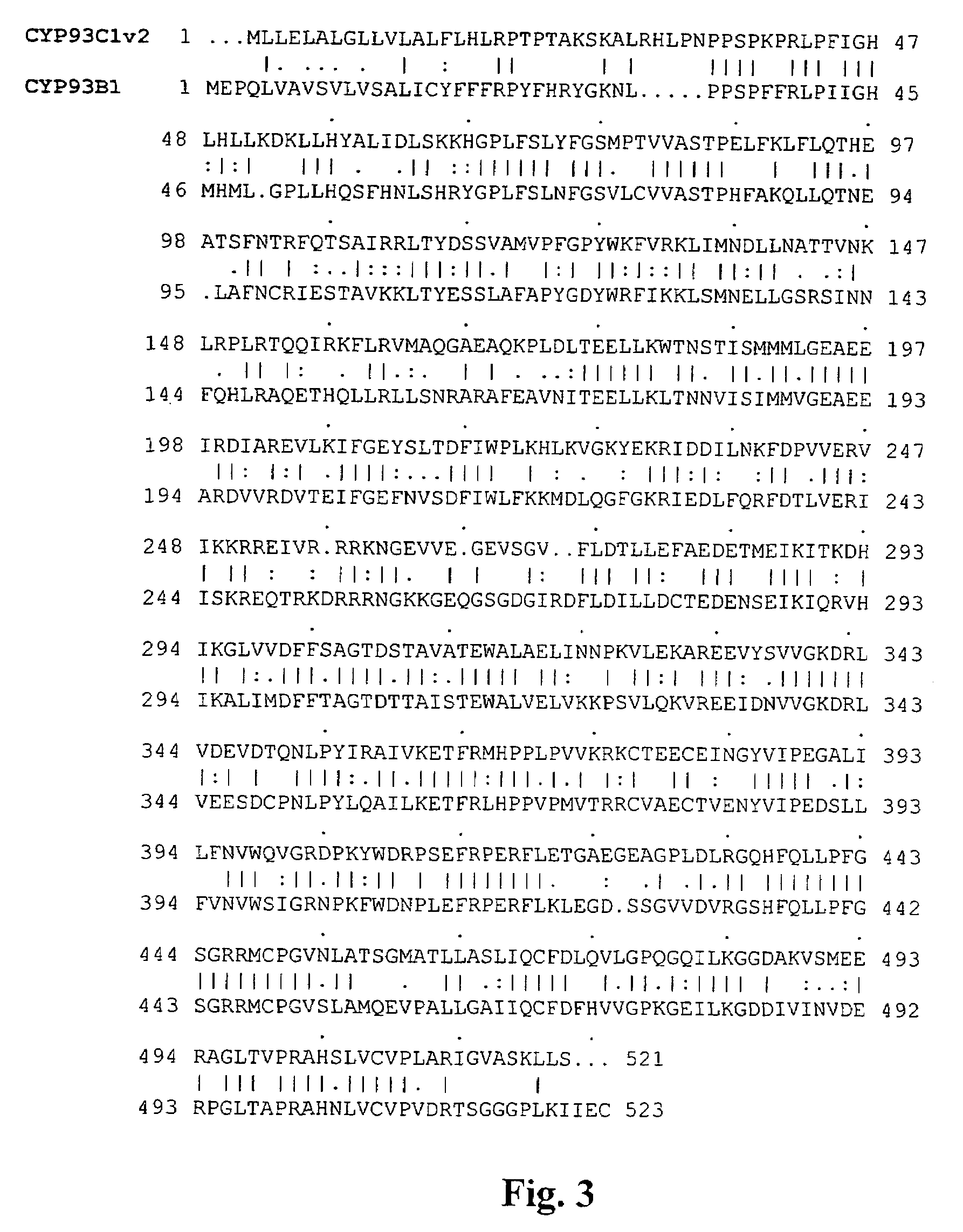Genetic manipulation of isoflavonoids
- Summary
- Abstract
- Description
- Claims
- Application Information
AI Technical Summary
Benefits of technology
Problems solved by technology
Method used
Image
Examples
example 1
Transformation of Arabidopsis thailiana with Soybean CYP93C1V2
[0067]Soybean CYP93C1v2 cDNA was placed in the binary plant transformation vector pCHF3, in which it is under control of the cauliflower mosaic virus 35S promoter, using standard recombinant DNA methods (Sambrook, et al. 1989. Molecular Cloning. A Laboratory Manual, 2nd Ed, Cold Spring Harbor Laboratory Press, New York). The gene was then transformed into plants of the crucifer, Arabidopsis thaliana ecotype Columbia, using Agrobacterium tumefaciens and a standard floral infiltration procedure (Clough, S. J. and Bent, A. F., 1998, “Floral dip: a simplified method for Agrobacterium-mediated transformation of Arabidopsis thaliana”. Plant J 16: 735–743). Transgenic plants were selected by germinating the seedlings on kanamycin, and those surviving selection were allowed to set seed. T2 seedlings expressing CYP93C1v2 were identified by standard DNA and RNA gel blot analysis (Sambrook, et al. 1989. Molecular cloning. A Laborato...
example 2
Methodology Used to Isolate and Identify IFS cDNA Clones
[0071]In an attempt to obtain cDNA clones encoding IFS, a functional genomics approach was followed. IFS activity is present in soybean seeds, which accumulate daidzein and genistein. Furthermore, IFS activity can be induced in soybean tissues in response to infection with Phylophthora infestans, associated with the accumulation of the isoflavonoid phytoalexin glyceollin (Bhattacharyya, M. K. and E. W. B. Ward, 1987, “Biosynthesis and metabolism of glyceollin I in soybean hypocotyls following wounding or inoculation with Phytophthora megasperma f. sp. glycinea,” Physiol Mol Plant Path 31: 387–405). It was also known that an enzyme catalyzing a similar reaction to IFS, namely the 2-hydroxylation of flavanone but without aryl migration, belongs to the CYP93B1 subclass of cytochrome P450s (Akashi, et al, 1998, “Identification of a cytochrome P450 cDNA encoding (2S)-flavanone 2-hydroxylase of licorice (Glycyrrhiza echinata L.: Faba...
example 3
Method of Increasing Dietary Isoflavonoid Intake
[0073]Transgenic tomato plants are produced by the introduction of CYP93C1v2 via standard Agrobacterium-based procedures. In a preferred embodiment, the CYP93C1v2 coding sequence is under control of a gene promoter giving specific expression in the fruit. Progeny containing the coding region of the CYP93C1v2 gene are selected at the seedling stage by standard polymerase chain reaction and / or DNA blot analysis known to those skilled in the art. Plants scoring positive for possession of the transgene are grown to fruiting, and fruit analyzed for the presence of isoflavones by the HPLC methods shown in FIG. 7 and FIG. 8 of the present invention. Fruit harvested from the transgenic tomato plants are ingested to increase the dietary intake of isoflavonoids.
[0074]It is to be understood that the above description is of preferred exemplary embodiments of the invention and is intended to be illustrative of the invention, but is not to be constr...
PUM
| Property | Measurement | Unit |
|---|---|---|
| Fraction | aaaaa | aaaaa |
| Electrical resistance | aaaaa | aaaaa |
| Efficiency | aaaaa | aaaaa |
Abstract
Description
Claims
Application Information
 Login to View More
Login to View More - R&D
- Intellectual Property
- Life Sciences
- Materials
- Tech Scout
- Unparalleled Data Quality
- Higher Quality Content
- 60% Fewer Hallucinations
Browse by: Latest US Patents, China's latest patents, Technical Efficacy Thesaurus, Application Domain, Technology Topic, Popular Technical Reports.
© 2025 PatSnap. All rights reserved.Legal|Privacy policy|Modern Slavery Act Transparency Statement|Sitemap|About US| Contact US: help@patsnap.com



